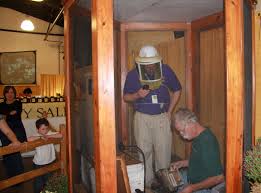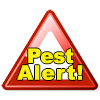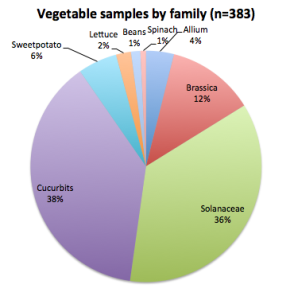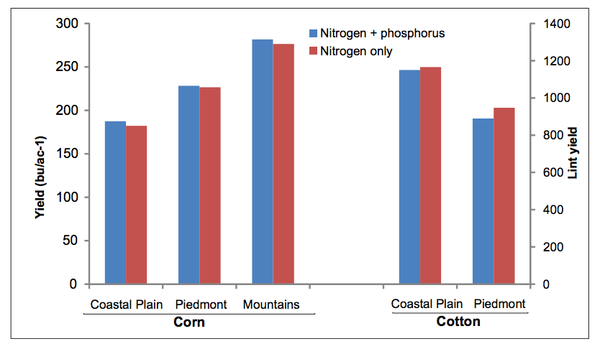
NC State Fair Honey Bee Exhibit
If you’re visiting the State Fair this week (runs through Oct. 27th), don’t forget to check out the Expo …



Extension and research at NC State address timely issues impacting our state. Extension delivers trusted information directly into the hands of farmers and agribusinesses, helping them translate knowledge into solutions that grow our economy and communities.
El inglés es el idioma de control de esta página. En la medida en que haya algún conflicto entre la traducción al inglés y la traducción, el inglés prevalece.
Al hacer clic en el enlace de traducción se activa un servicio de traducción gratuito para convertir la página al español. Al igual que con cualquier traducción por Internet, la conversión no es sensible al contexto y puede que no traduzca el texto en su significado original. NC State Extension no garantiza la exactitud del texto traducido. Por favor, tenga en cuenta que algunas aplicaciones y/o servicios pueden no funcionar como se espera cuando se traducen.
Inglês é o idioma de controle desta página. Na medida que haja algum conflito entre o texto original em Inglês e a tradução, o Inglês prevalece.
Ao clicar no link de tradução, um serviço gratuito de tradução será ativado para converter a página para o Português. Como em qualquer tradução pela internet, a conversão não é sensivel ao contexto e pode não ocorrer a tradução para o significado orginal. O serviço de Extensão da Carolina do Norte (NC State Extension) não garante a exatidão do texto traduzido. Por favor, observe que algumas funções ou serviços podem não funcionar como esperado após a tradução.
English is the controlling language of this page. To the extent there is any conflict between the English text and the translation, English controls.
Clicking on the translation link activates a free translation service to convert the page to Spanish. As with any Internet translation, the conversion is not context-sensitive and may not translate the text to its original meaning. NC State Extension does not guarantee the accuracy of the translated text. Please note that some applications and/or services may not function as expected when translated.
Collapse ▲
If you’re visiting the State Fair this week (runs through Oct. 27th), don’t forget to check out the Expo …

Date: October 10, 2013 From: Jim Dunphy, Extension Soybean Specialist, and Steve Koenning, Extension Plant Pathologist Soybean rust was identified on …

Date: October 2, 2013 From: Jim Dunphy, Extension Soybean Specialist, and Steve Koenning, Extension Plant Pathologist Soybean rust was identified on …

Date: September 27, 2013 From: Jim Dunphy, Extension Soybean Specialist, and Steve Koenning, Extension Plant Pathologist It was announced September 27 …

The Vegetable Pathology lab at NC State has been working in collaboration with the Plant Disease and Insect Clinic to …
A group of plant scientists at NC State University are trying to help ornamental plant growers get to the …

Late blight has been confirmed on tomatoes in Watauga, Guilford and Wake Counties and on potatoes in Watauga County …

Head Scab is being found throughout North Carolina. Growers need to scout their fields now to determine if DON …

The 65th Annual Crop Protection School and Annual Meeting of the Crop Protection Association of North Carolina Inc. l …
The EPA seeks to ensure that antimicrobial products that are intended to control public health microorganisms, and are applied …
Humans aren’t the only species with a sweet tooth. NC State University researchers and Extension specialists have found that …
Stripe rust has arrived in North Carolina. Growers should be watching for the development of stripe rust “hot-spots” in …
An electronic Buffer Zone Calculator is available in EPA’s Soil Fumigant Toolbox. The EPA developed this new tool to help soil fumigant …

Date: April 11, 2013 From: Kelly Ivors, Extension Plant Pathologist Impatiens downy mildew was recently identified in a Virginia greenhouse in …
More than 145,000 reports made each year to poison centers involving pesticides and disinfectants. During National Poison Prevention Week, March …
Over the last few days, I have received several questions about spotted wing drosophila (SWD) management. The most common …

Good morning (6:30 a.m., 2/21/13) Rains will be moving in tomorrow (Friday) and you may wish to take the opportunity …

This publication discusses Anthracnose Fruit Rot (Colletotrichum sp.) of blueberries in detail. Included are the …

This factsheet for farmers describes concepts, terminology, and guidelines concerning soil sampling. Proper testing allows …

Phosphorus (P) is the second most important nutrient in crop production but is often found …
This factsheet summarizes the symptoms and management of stubby-root nematodes in soybean in North Carolina.
Lance nematode is not a common problem of soybeans, but can cause local damages in …
The reniform nematode is not a common nematode pressure for soybean growers in North Carolina, …

This soybean disease factsheet covers aerial web blight, a generally minor disease of soybean in …
This factsheet discusses bacterial blight of soybean in North Carolina.